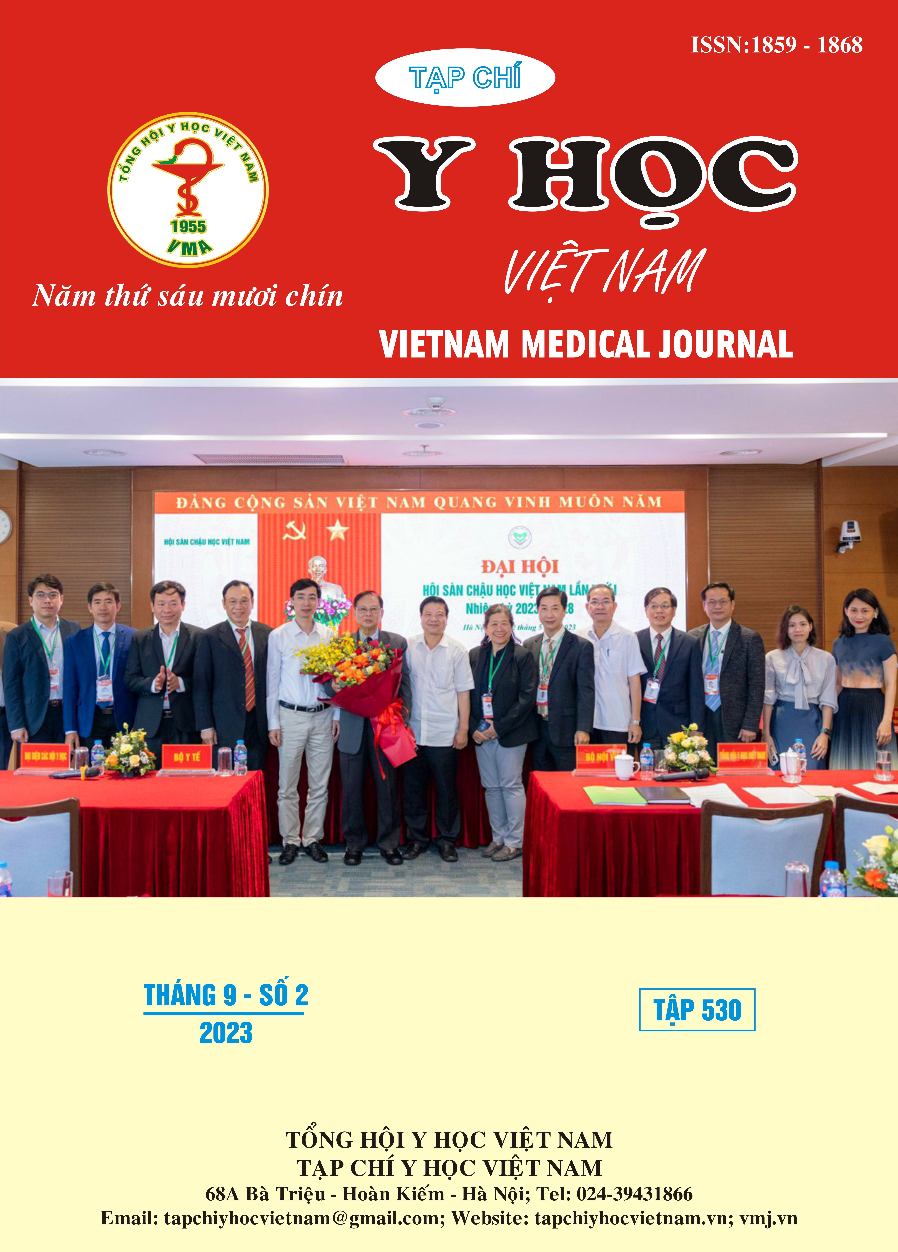ANTIBIOTIC RESISTANCE AND THE EFECTINESS OF HELICOBACTE PYLORI ERADICATION ESTABLISHED ON THE BASIC OF ANTIBIOGRAM IN HANOI MEDICAL UNIVERSITY HOSPITAL
Main Article Content
Abstract
The objective of the study was to describe the antibiotic resistance status and the effectiveness of H. pylori eradication based on the results of the antibiotic resistance of cultured bacteria. A retrospective descriptive study included 86 H. pylori infected patients who had failed with at least 2 previous courses of treatment, were successfully cultured for antibiotic biogram by E-test method and treated based on the antibiogram since August 2020 to December 2022 at Hanoi Medical University Hospital. The results showed that: the rate of resistance to at least one antibiotic was 97.7%, varying with each type of Clarithromycin (CLR), Amoxicillin (AMX), Levofloxacin (LVX), Tetracycline (TE), Metronidazol (MTZ) corresponding is 96.5%, 52.3%, 44.2%, 1% and 0%; the rate of multi-resistance is 73.3%, the rate of dual resistance to AMX and CLR is the highest, up to 52.3%, while dual resistance to MTZ and TE is the lowest ~1%). The main regimen used is bismuth-based quadruple therapy (PTMB) accounting for 57.0%. The patients who followed up and checked the Breath test after treatment was 33 patients (38.3%), the success after the first regimen was 75.76% by per-protocol analysis, and 29.07% by intention-to-treat analysis. However, the patients who failed the first time based on the antibiogram were adjusted for the second time, and the successful eradication rate was 96.55% by PP and 32.56% by ITT. Conclusions: The patient who failed after two H. pylori treatment therapies, was assigned to culture to find out the rate of antibiotic resistance and were used antibiotics as recommended by the American Gastroenterology Association and Vietnam had sastisfactory results with an eradication rate of over 90%.
Article Details
Keywords
antibiotic resistance, Helicobacter pylori, eradication.
References
2. Jr Warren W, B. Mashall M. Unidentified curved bacilli on gastric epithelium in active chronic gastritis. Lancet (London, England). 1983;1(8336). Accessed April 15, 2022.
3. Pellicano R, Franceschi F, Saracco G, Fagoonee S, Roccarina D, Gasbarrini A. Helicobacters and Extragastric Diseases. Helicobacter. 2009;14:58-68.
4. De Francesco V, Giorgio F, Hassan C, et al. Worldwide H. pylori antibiotic resistance: a systematic review. J Gastrointestin Liver Dis. 2010;19(4):409-414.
5. Malfertheiner P, Megraud F, O’Morain CA, et al. Management of Helicobacter pylori infection-the Maastricht V/Florence Consensus Report. Gut. 2017;66(1):6-30.
6. Ghotaslou R, Leylabadlo HE, Asl YM. Prevalence of antibiotic resistance in Helicobacter pylori: A recent literature review. World Journal of Methodology. 2015;5(3):164.
7. Binh TT, Shiota S, Nguyen LT, et al. The Incidence of Primary Antibiotic Resistance of Helicobacter pylori in Vietnam. Journal of Clinical Gastroenterology. 2013;47(3):233-238.
8. Đặng Ngọc Quý Huệ. Nghiên cứu tỷ lệ kháng Clarithromycin, Levofloxcin cảu Helicobacter pylori bằng Epsilometer và hiệu quả của phác đồ EBMT ở bệnh nhân viêm dạ dày mạn. 2018.
9. Nguyễn Thị Chi, Trần Ngọc Ánh, Trần Duy Hưng. Tình hình kháng kháng sinh của Helicobacter pylori tại Bệnh viện Đại học Y Hà Nội từ 2017-2019. Tạp chí Y học thực hành. 2020;1133:92-96.
10. Nguyễn Thị Chi, Trần Ngọc Ánh. Nghiên cứu kháng kháng sinh và đánh giá hiệu quả điều trị tiệt trừ Helicobacter pylori theo kháng sinh đồ. Luận văn chuyên khoa cấp 2. Trường Đại học Y Hà Nội; 2020. Accessed June 8, 2023.


